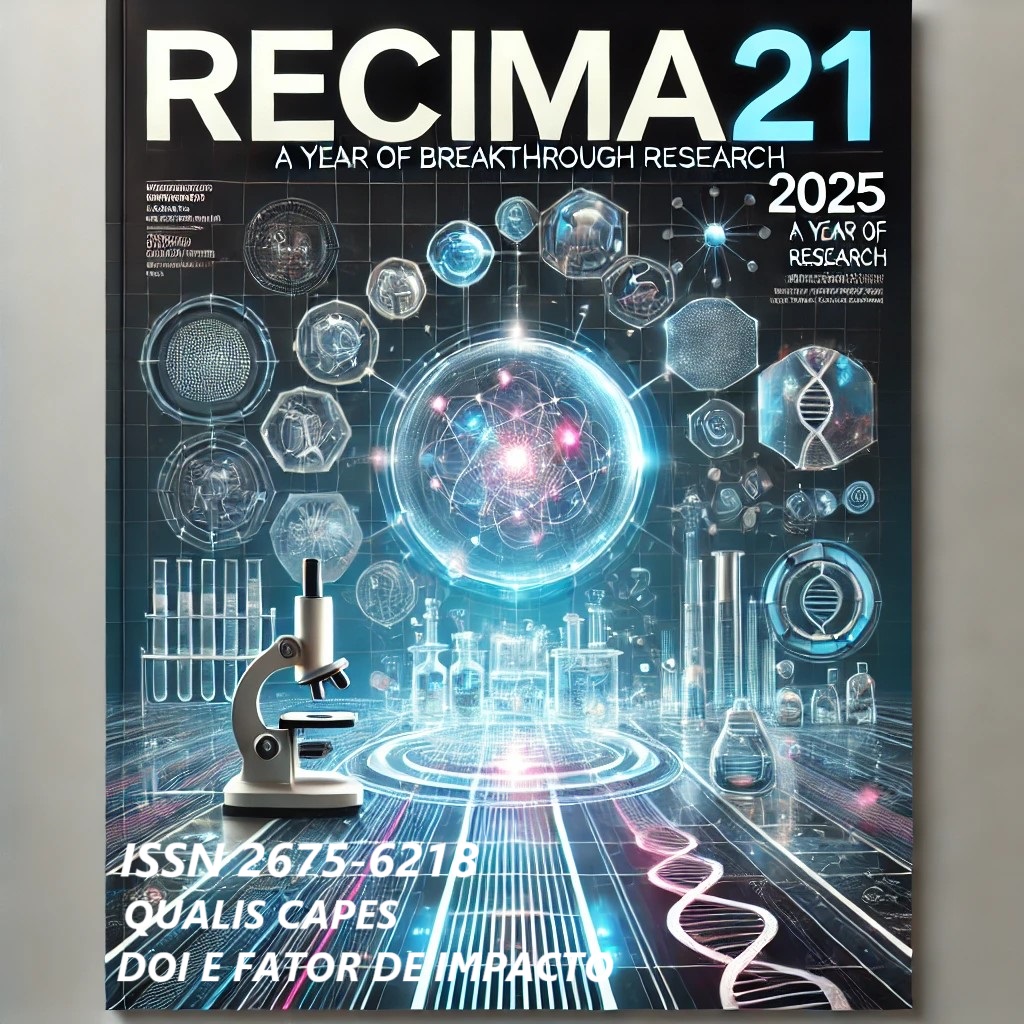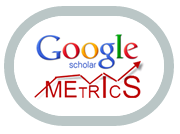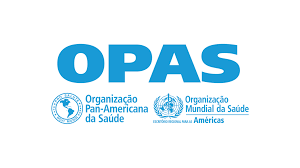TRANSFORMANDO EL PANORAMA LEGAL: UNA ESTRUCTURA IMPULSADA POR IA PARA EL PROCESAMIENTO DE TEXTOS JUDICIALES
DOI:
https://doi.org/10.47820/recima21.v6i5.6426Palabras clave:
Inteligencia Artificial y Derecho, Procesamiento del Lenguaje Natural, Metodología para el Desarrollo de Inteligencia ArtificialResumen
La Inteligencia Artificial puede revolucionar el ámbito jurídico al gestionar grandes volúmenes de datos textuales en los procesos judiciales. Sin embargo, existen desafíos para manejar diferentes contextos en diversos escenarios. Este artículo propone una metodología innovadora para desarrollar aplicaciones jurídicas, aprovechando técnicas avanzadas de procesamiento del lenguaje natural, como arquitecturas basadas en transformadores, modelos preentrenados y aprendizaje por transferencia. A diferencia del desarrollo tradicional de software, este enfoque aborda las incertidumbres propias de la IA con un marco iterativo que integra colaboración con profesionales del derecho, datos específicos del dominio y estrategias de evaluación integrales. La metodología fue validada con aplicaciones reales en el Tribunal de Justicia de Rio Grande do Sul, incluyendo un Generador de Informes de Sentencia basado en IA Generativa. Además, se obtuvieron resultados de vanguardia en el Reconocimiento de Entidades Nombradas con modelos BERT optimizados y generación de texto contextual con modelos basados en GPT-2, mostrando su adaptabilidad a distintos contextos legales. Este trabajo conecta técnicas avanzadas de lenguaje natural con las necesidades del poder judicial, sentando las bases para aplicaciones de IA escalables y fiables. La metodología propuesta enfrenta desafíos prácticos, armonización regulatoria y especificidad de los datos, permitiendo una integración eficaz de la IA en el sector legal y mejorando la eficiencia e impacto de los sistemas judiciales reales.
Descargas
Referencias
ADADI, A.; BERRADA, M. Peeking Inside the Black-Box: A Survey on Explainable Artificial Intelligence (XAI). IEEE Access, v. 6, p. 52138–52160, 2018. DOI: https://doi.org/10.1109/ACCESS.2018.2870052
BAI, Y. et al. Benchmarking Foundation Models with Language-Model-as-an-Examiner. Advances in Neural Information Processing Systems, v. 36, p. 78142–78167, 15 dez. 2023.
BOMMASANI, R. et al. On the Opportunities and Risks of Foundation Models. arXiv, 12 jul. 2022. Available at: https://doi.org/10.48550/arXiv.2108.07258. Available at: 26 out. 2024
CARMO, D. et al. PTT5: Pretraining and validating the T5 model on Brazilian Portuguese data. arXiv, 8 out. 2020.
CLARK, P. et al. Think you have Solved Question Answering? Try ARC, the AI2 Reasoning Challenge. arXiv, 14 mar. 2018. Available at: https://www.doi.org/10.48550/arXiv.1803.05457. Available at: 24 out. 2024
DEVLIN, J. et al. BERT: Pre-training of Deep Bidirectional Transformers for Language Understanding. Proceedings of the 2019 […] Conference of the North American Chapter of the Association for Computational Linguistics: Human Language Technologies, Volume 1 (Long and Short Papers). NAACL-HLT 2019. Minneapolis, Minnesota: Association for Computational Linguistics, jun. 2019. Available at: http://doi.org/10.18653/v1/N19-1423. Available at: 6 ago. 2021 DOI: https://doi.org/10.18653/v1/N19-1423
DICE, D.; KOGAN, A. Optimizing Inference Performance of Transformers on CPUs. arXiv, 22 fev. 2021.
GAO, Y. et al. Retrieval-Augmented Generation for Large Language Models: A Survey. arXiv, 27 mar. 2024. Available at: https://doi.org/10.48550/arXiv.2312.10997. Available at: 27 out. 2024
HENDRYCKS, D. et al. Measuring Massive Multitask Language Understanding. arXiv, 12 jan. 2021. Available at: http://doi.org/10.48550/arXiv.2009.03300. Available at: 24 out. 2024
HSU, Y.-T. et al. Efficient Inference For Neural Machine Translation. Proceedings of SustaiNLP: Workshop on Simple and Efficient Natural Language Processing EMNLP-SUSTAINLP 2020. Online: Association for Computational Linguistics, nov. 2020. Available at: https://www.doi.org/10.18653/v1/2020.sustainlp-1.7. Available at: 20 fev. 2022 DOI: https://doi.org/10.18653/v1/2020.sustainlp-1.7
JIANG, A. Q. et al. Mixtral of Experts. arXiv, 8 jan. 2024. Available at: https://doi.org/10.48550/arXiv.2401.04088. Available at: 26 out. 2024
LIN, C.-Y. ROUGE: A Package for Automatic Evaluation of Summaries. Text Summarization Branches Out. Anais [...] Barcelona, Spain: Association for Computational Linguistics, jul. 2004. Available at: https://aclanthology.org/W04-1013. Available at: 25 jun. 2024
LUZ DE ARAUJO, P. H. et al. LeNER-Br: A Dataset for Named Entity Recognition in Brazilian Legal Text. In: VILLAVICENCIO, A. et al. (Eds.). Computational Processing of the Portuguese Language. Lecture Notes in Computer Science. Cham: Springer International Publishing, 2018. v. 11122. p. 313–323. DOI: https://doi.org/10.1007/978-3-319-99722-3_32
MUNKHDALAI, T.; FARUQUI, M.; GOPAL, S. Leave No Context Behind: Efficient Infinite Context Transformers with Infini-attention. arXiv, 9 ago. 2024. Available at: https://doi.org/10.48550/arXiv.2404.07143. Available at: 27 out. 2024
NOY, N. F.; MCGUINNESS, D. L. Ontology Development 101: A Guide to Creating Your First Ontology. [S. l.] Stanford Knowledge Systems Laboratory, 2001.
OPENAI et al. GPT-4 Technical Report. arXiv, 4 mar. 2024. Available at: https://doi.org/10.48550/arXiv.2303.08774. Available at: 4 ago. 2024
ÖZÇIFT, A. et al. Advancing natural language processing (NLP) applications of morphologically rich languages with bidirectional encoder representations from transformers (BERT): an empirical case study for Turkish. Automatika, v. 62, n. 2, p. 226–238, 3 abr. 2021. DOI: https://doi.org/10.1080/00051144.2021.1922150
PAN, S. J.; YANG, Q. A Survey on Transfer Learning. IEEE Transactions on Knowledge and Data Engineering, v. 22, n. 10, p. 1345–1359, out. 2010. DOI: https://doi.org/10.1109/TKDE.2009.191
PAPINENI, K. et al. BLEU: a method for automatic evaluation of machine translation. Proceedings of the 40th Annual Meeting on Association for Computational Linguistics. ACL’ 02.USA: Association for Computational Linguistics, 6 jul. 2002. Available at: https://dl.acm.org/doi/10.3115/1073083.1073135. Access at: 4 ago. 2024 DOI: https://doi.org/10.3115/1073083.1073135
PUSHP, P. K.; SRIVASTAVA, M. M. Train Once, Test Anywhere: Zero-Shot Learning for Text Classification. arXiv, 23 dez. 2017.
QIN, L. et al. Multilingual Large Language Model: A Survey of Resources, Taxonomy and Frontiers. arXiv, 7 abr. 2024. Available at: https://doi.org/10.48550/arXiv.2404.04925. Access at: 26 out. 2024
RADFORD, A. et al. Improving language understanding by generative pre-training. OpenAI blog, 2018.
RADFORD, A. et al. Language models are unsupervised multitask learners. OpenAI blog, v. 1, n. 8, p. 9, 2019.
RAFFEL, C. et al. Exploring the limits of transfer learning with a unified text-to-text transformer. arXiv preprint arXiv:1910.10683, 2019.
SOUZA, F.; NOGUEIRA, R.; LOTUFO, R. BERTimbau: Pretrained BERT Models for Brazilian Portuguese. Intelligent Systems. Anais [...] Lecture Notes in Computer Science.Cham: Springer International Publishing, 2020. Available at: http://doi.org/10.1007/978-3-030-61377-8_28 DOI: https://doi.org/10.1007/978-3-030-61377-8_28
TOUVRON, H. et al. LLaMA: Open and Efficient Foundation Language Models. arXiv, 27 fev. 2023. Available at: https://doi.org/10.48550/arXiv.2302.13971. Access at: 29 mar. 2024
VASWANI, A. et al. Attention is all you need. Proceedings of the 31st International Conference on Neural Information Processing Systems. NIPS’17.Red Hook, NY, USA: Curran Associates Inc., 4 dez. 2017. Available at: https://dl.acm.org/doi/10.5555/3295222.3295349. Access at: 6 ago. 2021
WAGNER FILHO, J. A. et al. The brWaC Corpus: A New Open Resource for Brazilian Portuguese. Proceedings of the Eleventh International Conference on Language Resources and Evaluation (LREC 2018). Miyazaki, Japan: European Language Resources Association (ELRA), maio 2018. Available at: https://aclanthology.org/L18-1686. Access at: 17 ago. 2021
WANG, Y. et al. Generalizing from a Few Examples: A Survey on Few-shot Learning. ACM Computing Surveys, v. 53, n. 3, p. 63:1-63:34, 12 jun. 2020. DOI: https://doi.org/10.1145/3386252
WILLIAN SOUSA, A.; FABRO, M. Iudicium Textum Dataset Uma Base de Textos Jurídicos para NLP. 2nd Dataset Showcase Workshop at SBBD (Brazilian Symposium on Databases). Anais [...] Em: SBBD 2019. Fortaleza, Brazil: 7 out. 2019.
XUE, L. et al. mT5: A massively multilingual pre-trained text-to-text transformer. arXiv, 11 mar. 2021. Available at: https://doi.org/10.48550/arXiv.2010.11934. Access at: 26 out. 2024 DOI: https://doi.org/10.18653/v1/2021.naacl-main.41
ZANUZ, L.; RIGO, S. J. Fostering Judiciary Applications with New Fine-Tuned Models for Legal Named Entity Recognition in Portuguese. (V. Pinheiro et al., Eds.)Computational Processing of the Portuguese Language. Cham: Springer International Publishing, 2022. Available at: https://doi.org/10.1007/978-3-030-98305-5_21 DOI: https://doi.org/10.1007/978-3-030-98305-5_21
ZELLERS, R. et al. HellaSwag: Can a Machine Really Finish Your Sentence?. Proceedings of the 57th Annual Meeting of the Association for Computational Linguistics. ACL 2019. Florence, Italy: Association for Computational Linguistics, jul. 2019. Available at: http://doi.org/10.18653/v1/P19-1472. Access at: 24 out. 2024 DOI: https://doi.org/10.18653/v1/P19-1472
ZHENG, L. et al. Judging LLM-as-a-Judge with MT-Bench and Chatbot Arena. Advances in Neural Information Processing Systems, v. 36, p. 46595–46623, 15 dez. 2023.
Descargas
Publicado
Licencia
Derechos de autor 2025 RECIMA21 - Revista Científica Multidisciplinar - ISSN 2675-6218

Esta obra está bajo una licencia internacional Creative Commons Atribución 4.0.
Os direitos autorais dos artigos/resenhas/TCCs publicados pertecem à revista RECIMA21, e seguem o padrão Creative Commons (CC BY 4.0), permitindo a cópia ou reprodução, desde que cite a fonte e respeite os direitos dos autores e contenham menção aos mesmos nos créditos. Toda e qualquer obra publicada na revista, seu conteúdo é de responsabilidade dos autores, cabendo a RECIMA21 apenas ser o veículo de divulgação, seguindo os padrões nacionais e internacionais de publicação.













